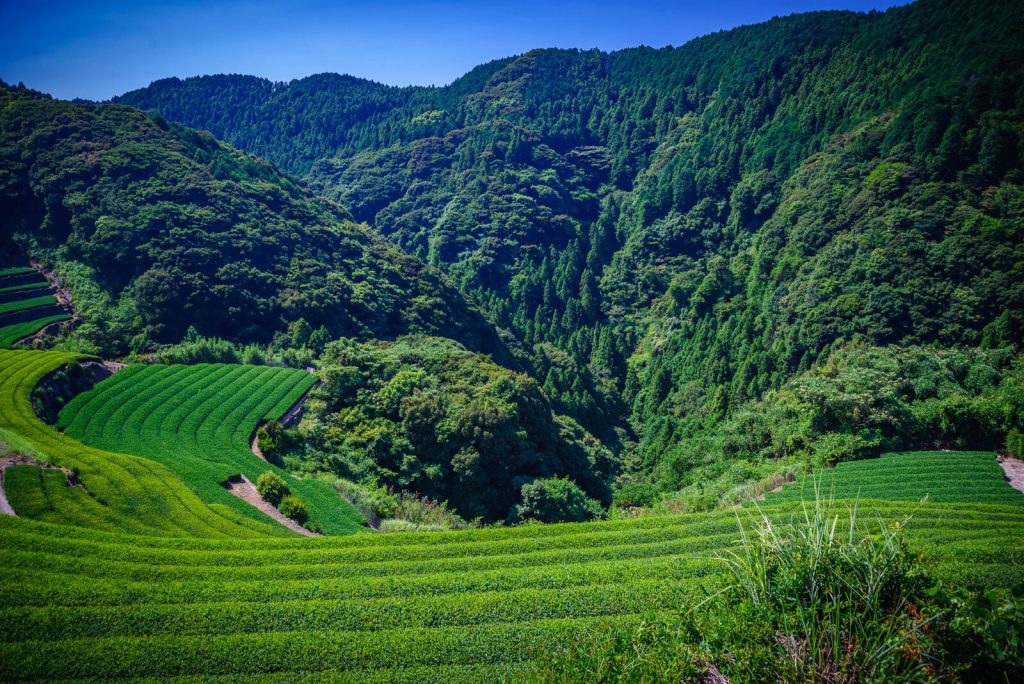Nagasaki is an attractively situated port city on the island of Kyushu and the capital of Nagasaki Prefecture.
As one of Japan’s closest port cities to the Asian mainland, Nagasaki has played a prominent role in foreign trade relations for many centuries and was the most important of only a very few ports open to restricted numbers of foreign traders during Japan’s period of isolation. In more recent history, Nagasaki became the second city after Hiroshima to be destroyed by an atomic bomb towards the end of World War II.
Here are some of the best things to enjoy in the historic city of Nagasaki.
Dejima
This former man-made island is now part of the mainland of the city thanks to landfill. Dejima was a Dutch trading post to which the “hairy barbarians” were confined – and ordinary Japanese, except for courtesans provided to the Dutch, Japanese guards and Tokugawa officials, prohibited from entering – during Japan’s two hundred years of self-imposed isolation (sakoku) from 1641 to 1854.
Dejima was the source of Rangaku, or Dutch learning, that became the basis of modern Japanese medicine and science. Much of Dejima is currently under construction now, but it is well worth seeing. Dejima is a short walk from Nagasaki’s Chinatown.
The Siebold Memorial Museum is well worth a visit if you are interested in the early history of foreigners in Japan. Philipp Franz von Siebold was a German doctor who came to Japan with the Dutch and was resident physician on Dejima from 1823 -1829.
Siebold did much to introduce western medicine to Japan and introduce Japan to the west on his return to Europe. Take a #3 streetcar for Hotarujaya from Nagasaki Station and get off at Shinnakagawamachi and then a short walk.
Chinatown
Shinchi, Nagasaki’s Chinatown, is a smaller version of the Chinatowns in Kobe and Yokohama complete with four ornate gates and packed with Chinese restaurants and shops.
Try Nagasaki’s most famous dish champon: noodles served with shellfish, vegetables, and meat in a thick soup. (Champon reputedly comes from the Chinese for “Have you eaten yet?”).
Chinese influence is not restricted to Chinatown alone. Sofukuji Temple dating from 1629 is an interesting place to visit for its imitations of Ming Dynasty architecture.
Likewise Kofukuji Temple known as the “Chinese Temple” was established by the city’s Chinese residents in the early seventeenth century. The Confucius Shrine was built in 1893 by Chinese residents to serve their religious needs and indeed the land still belongs to China and the title is administered by the Chinese embassy in Tokyo.
Two other temples in Nagasaki with a Chinese connection are Shofukuji and Fukusaiji.
Other temples in Nagasaki include Daikoji Temple (Tel: 095 822 2877), which dates from 1614. Hosshinji Temple contains Nagasaki’s oldest bell, cast way back in 1438. Daionji Temple’s cemetery has the grave of Matsudaira Zushonokami, the Tokugawa-appointed magistrate (bugyo) of Nagasaki, who in 1808 committed ritual suicide after the British frigate, HMS Phaeton, sailed into Nagasaki harbor. This intrusion led to the Tokugawa regime instructing its official interpreters to learn English and Russian, as well as Dutch, and in 1814, the first English-Japanese dictionary containing 6,000 words was compiled by the Dutch scholar Motoki Shozaemon. This incident is related in the novel The Thousand Autumns of Jacob de Zoet by David Mitchell.
Kotaiji Temple (Tel: 095 823 7211) is another temple in Nagasaki’s Teramachi area, an active Zen temple of the Soto sect, where foreigners are welcome to join meditation practice.
Oura Catholic Church
Oura Catholic Church is Japan’s oldest Gothic church built for the foreign community in the nineteenth century under the supervision of a French missionary, Petit Jean. The church is on the way to Glover House and is closely tied to the history of Japan’s Hidden Christians (kakure kirishitan) who were persecuted, often martyred and forced into hiding by a Tokugawa government ban on Christianity.
In particular, the church commemorates the martyrdom in 1597 of 26 Christians – 20 Japanese (including 3 young boys) and six foreigners (4 Spaniards, 1 Mexican and an Indian) – who were crucified and run through with spears in Nagasaki on the orders of Hideyoshi Toyotomi, Japan’s military ruler at the time. The site of the actual incident is Nishizakamachi – a short walk from Nagasaki Station.
The monument below and adjacent Twenty-Six Martyrs Museum were completed in 1962. The museum has an excellent collection of historical artifacts relating to the introduction of Christianity in Japan including original statues of the Virgin Mary, disguised as Kannon, the Japanese goddess of mercy, and fumi-e, metal images of Jesus or Mary, that Christians were forced to stamp on to renounce their faith. The highlight of the museum is an original letter written by Francis Xavier to King John III of Portugal. The museum also covers the Hidden Christians (kakure kirishitan) who continued their faith in secret throughout the Edo Period.
Urakami Cathedral
This fine brick building and reputedly the largest church in the East is a replica of 1925 original destroyed by the atom bomb in 1945. You can still see scorch marks on some of the restored statues near the front entrance and the first belfry which collapsed into the church grounds and is preserved as a memorial. Urakami Cathedral was originally built to serve the many kakure kirishitan (Hidden Christians), who had retained a version of their faith during the times of persecution under the Tokugawa regime in the Edo Period of Japanese history (1603-1867). The original Urakami Cathedral was completed in 1925 and the building we see today dates from 1959.
Glover House
The inspiration for Puccini’s Madame Butterfly, this mansion was built in 1863 by Scottish merchant Thomas Glover. Glover came to Japan at age 21 and never left. He worked in shipbuilding, coal, arms dealing and brewing, ultimately being awarded the Second Class Order of the Rising Sun. The Glover house and grounds sit atop a hill that commands a view of the entire city – and speak of a bygone era of fabulous luxury.
Dutch Slope
Close to Oura Catholic Church and the Confucian Shrine, is Orandazaka (Dutch Slope), a pleasant area with views of the bay. This district was settled by foreigners after Nagasaki opened as a Treat Port in 1859 and contains some attractive western-style, clapboard buildings preserved as museums, cafes or private residences.
Glover’s western style house at Glover Garden
Peace Park
A trip to Nagasaki must include a ride out to Peace Park and the nearby Nagasaki Atomic Bomb Museum dedicated to the events of August 9th, 1945. Connected to the Atomic Bomb Museum is the impressive and moving Nagasaki National Peace Memorial Hall for the Atomic Bomb Victims with a registry of all the victims of the bombing kept in a solemn and beautiful, subterranean Remembrance Hall. Next to the Atomic Bomb Museum is the Nagasaki Museum of History and Folklore containing the Noguchi Yataro Art Museum. Peace Park is a few minutes walk away, and was the epicenter of the atomic bombing in 1945. Go up the stairs to the beautifully laid out garden, with its Peace Fountain, the famous Peace Statue, and with memorials for peace donated by several different countries, many of them from the former Eastern Bloc. Urakami Cathedral is only a short walk away uphill along with the Nagai Takashi Memorial Museum.
Tourist information
Tourist information can be found at Nagasaki Prefectural Tourist Association: 095-826-9407 on the second floor of the Ken-ei bus station, and Nagasaki City Tourist Association: 095-823-3631. There is a tourist information office at Nagasaki Station 095 823 3631.
Stop Lion at Suwa Shrine, Nagasaki
Nagasaki Festivals
Nagasaki’s main festivals include the Kunchi Matsuri in early October from 7-9th centered on Suwa Shrine and including Chinese dragon dances, fireworks (hanabi) and colorful costumes. The Nagasaki Lantern Festival in February celebrates Chinese New Year and the city’s long history of foreign connections with China and Europe. The Shoro Nagashi Festival takes place on August 15 when hand-made floats are placed in the ocean at Nagasaki Harbor in a ceremony in honor of one’s ancestors. From June to August the Nagasaki Dragon Boat Competition (Peiron Boat Races) features Chinese-style dragon boat races in the harbor and other venues in Nagasaki Prefecture. The main races take place on the last weekend of July in Nagasaki harbor in front of the Matsugae International Cruise Ship Terminal.
Nagasaki Entertainment
Nagasaki’s main entertainment area is Shianbashi – the warren of narrow streets and arcades around Shianbashi tram stop: bars, restaurants, soaplands provide all night entertainment. The Nagasaki Dejima Wharf has a number of nice restaurants and cafes overlooking the harbor. The modern Nagasaki Prefectural Art Museumdesigned by architect Kengo Kuma is a stand-out building in this area. The Hamano-machi area, with the Kanko-dori and the Hamano-machi arcades, is ideal for shopping with the Hamaya Department Store also here.
Anything to add to this list? Share them with us.





